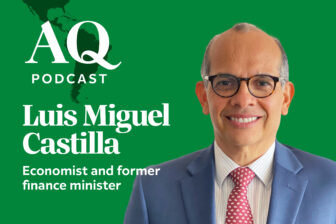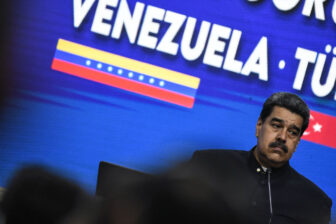BOGOTÁ — Peru remains mired in the problems that one year ago sparked three months of chaos. While a tense calm has prevailed since April, the primary triggers for unrest remain in place—and, in some cases, have worsened in recent months.
Rejection of government institutions is at an all-time high. According to polling by CPI, Congress currently has a disapproval rating of 90%, while President Dina Boluarte’s is at 84%. She remains bound by the whims of the right-wing parties on which her survival as president depends. Meanwhile, the economy is on track for minimal growth this year, crime is on the rise, and the potentially severe effects of El Niño stand to exacerbate conditions in Peru’s most underdeveloped regions.
The status quo post-impeachment of former President Pedro Castillo remains in place, which seemed inconceivable at the height of the protests. After Castillo’s destitution last year, massive unrest left around 60 fatalities, caused significant economic damage, and exacerbated fears about the future stability of a country that has experienced six changes of government since 2018.
Protesters had various demands, including Boluarte’s immediate resignation, fresh congressional and presidential elections, Castillo’s release from prison, and a constituent assembly to promote political and economic reforms. None of these demands has been met, and in the current political context, they appear far out of reach. Ironically, the outcome of the crisis has been to empower the very right-wing elements that Castillo’s supporters believe orchestrated a coup against him.
The President of the Council of Ministers, Luis Alberto Otárola, has close ties to three-time presidential candidate Keiko Fujimori and her Fuerza Popular party, the largest in Congress. He is widely credited with stabilizing the government during the most acute moments of unrest, having convinced Boluarte not to resign.
Resilient Congress
Congress held on to power despite intense pressure for new elections (legislators cannot stand for reelection in Peru, although Congress is currently debating a proposal to change that) and even sought to empower itself after the protests. It has since moved to shield its members from corruption investigations and attempt to increase its influence over other public entities such as the judiciary and Ombudsman’s Office.
The UN Special Rapporteur on the independence of judges and lawyers has expressed grave concern about the current Congressional investigation into the National Justice Board (JNJ). This independent judicial body appoints judges, oversees judicial authorities, and critically names members of the electoral authorities. The inquiry seeks the removal of all members of the JNJ on vague charges. Congressional leaders from Fuerza Popular and left-wing Perú Libre also collaborated to place an ally as Ombudsman, a key position overseeing the provision of public services.
Probes into Boluarte and Otárola over fatalities during the protests continue (both have denied wrongdoing). Still, they are unlikely to present a real threat to either under Attorney General Patricia Benavides, an ally of right-wing parties in Congress.
Prospects for political reform to address the underlying institutional causes of instability—such as rules allowing impeachment based on the vague premise of “moral incapacity” and fragmentation of the party system—are dimmer than ever despite civil society pressure. While Congress has begun to debate reforms to create a bicameral legislature (one piece of the reform agenda), they have tacked on a proposal to eliminate the prohibition on reelection—a bid by current lawmakers to maintain power.
A lack of reforms and the entrenchment of traditional power brokers means the risk of further unrest over the next year remains high.
Civil unrest risks remain latent
Other triggers for potential civil unrest loom in the coming months. El Niño stands to hit Peru at full force in early 2024, and the effects could devastate vulnerable communities. Northern provinces will likely see higher-than-average precipitation, creating flooding risks, while arid regions in the south will face droughts. The likely spread of diseases caused by increased rain, as was seen following Cyclone Yaku in March, threatens to overwhelm underprepared rural hospitals. A lagging and inefficient government response increases the probability of civil demonstrations.
A worsening security situation could also threaten the government’s fragile stability. Extortions in the first half of 2023 increased more than five-fold compared to the same period in 2019; homicides jumped by 88% over those years. This surge in crime led the government to declare a state of emergency in several areas of the capital in October. The Castillo administration implemented these measures in parts of Lima and neighboring Callao in 2022 to little effect.
The government has put renewed focus on security to boost its political standing, highlighted by the arrest of the son of a Shining Path leader on November 14. However, it has struggled to define a coherent strategy to deal with rising crime, which has been driven by the expansion of drug trafficking routes through northern Peru and the growing presence of Tren de Aragua, a Venezuelan gang that has expanded rapidly across South America. Former Interior Minister Vicente Romero resigned in November after he was censured by Congress for lack of progress in the fight against crime.
Former President Alberto Fujimori was freed from prison on December 6 following a Constitutional Court ruling, adding a new potential flashpoint for tensions. The release—in defiance of criticism from the Inter-American Court of Human Rights—risks sparking protests.
Despite these challenges, Boluarte will likely remain in power in 2024, which is set to be another turbulent year. The lack of reforms and the absence of momentum to address the deep-rooted social and political challenges that drove this year’s unrest confirm that political instability remains high. The cycle of political crisis, weak governability, and unmet social demands that have hamstrung Peruvian governments over the last seven years is unlikely to be broken.
__
Kahn is a director of Global Risk Analysis for the Andean Region at Control Risks.
Fernández de Soto is an analyst on the Global Risk Analysis team for the Andean Region at Control Risks.









